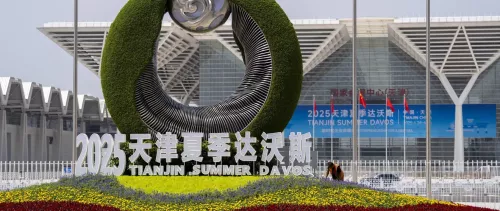
UNSPLASH
- We are living at the beginning of a new technological revolution around Industry 4.0 technologies such as artificial intelligence (AI), robotics, and the Internet of Things (IoT).
- Industry 4.0 refers to the “smart” and connected production systems designed to sense, predict, and interact with the physical world, so as to make decisions that support production in real-time.
- Developing countries need to diversify their production towards more technologically advanced sectors.
Just like rapid technological change can accelerate progress, it also risks leaving many people behind. Historically, every wave of technological progress since the Industrial Revolution has been associated with sharper inequalities between countries. Before the 1800s, there was little income disparity across countries; today the average gap in per capita income between developed and developing countries is over $40,000.
What would the effect of Industry 4.0 be? Would it facilitate or hinder the industrialization of developing countries? Would it reduce or increase inequalities?
What is Industry 4.0?
Industry 4.0 refers to the “smart” and connected production systems that are designed to sense, predict, and interact with the physical world, so as to make decisions that support production in real-time. In manufacturing, it can increase productivity, energy efficiency, and sustainability. It increases productivity by reducing downtime and maintenance costs.
Estimates suggest an increase in production line availability by 5 to 15%. It can also offer opportunities for energy saving and sustainability through optimisation. For example, in a case study of a multinational in the plastics sector, Industry 4.0, using energy sensors reduced the power consumption in one of its plants by around 40%, which saved over $200,000 a year in energy. However, only a few countries develop and trade Industry 4.0 technologies.
So far, the US and China lead in publications and patents. They also have the largest digital platforms, half the world’s hyperscale data centres, the highest rates of 5G adoption, 94% of all funding of AI start-ups in the past five years, and 70% of the world’s top AI researchers.
High-tech manufacturing and research and development capacity are another critical element for Industry 4.0, which also increase the opportunities for firms in developed countries to get a leading advantage. For example, European firms have made a lot of investments in IoT. Together with China and the US, they account for about three-quarters of all IoT spending.
How would Industry 4.0 impact inequalities?
Technological change affects inequality through jobs, wages and profits. In the case of Industry 4.0, new technology mainly increases productivity.
As companies become more productive, they are also more competitive and more likely to hire more higher-skilled workers in better jobs. Countries in which firms adopt Industry 4.0 could expect a higher increase in productivity and competitiveness, and wages.
At the same time, Industry 4.0 also brings some specific challenges. For example, many studies predict a large share of jobs lost in the economy due to AI and automation. But they do not consider that not all tasks are automated, and, most importantly, new products, tasks, and professions are created throughout the economy. Industry 4.0 in manufacturing can bring huge gains in productivity, but most firms in developing countries are way far from using Industry 4.0.
Harnessing Industry 4.0 for inclusive development
Developing countries would not be able to broadly deploy Industry 4.0 if they have weak manufacturing. They need to diversify their production towards more technologically advanced sectors.
The state has a crucial role in promoting potential sectors, strengthening innovation systems, building coherence between STI (science, technology and information) policies and other social and economic ones, and ensuring a participatory approach in this process. Governments should also promote affordable, high-quality access to the Internet and build digital skills in the business sector, including SMEs. They should also create the conditions required to deploy Industry 4.0 in manufacturing.
These include the development of national strategies directing the coordinated deployment of Industry 4.0, the creation of a multistakeholder mechanism institutionalising a participatory approach to foster Industry 4.0, and building international cooperation to accelerate the transference of technology and know-how.
To foster the adoption of Industry 4.0, governments should raise the awareness of the private sector, promote investments and facilitate financing for the deployment of Industry 4.0. Policy-makers in developing countries should also be attuned to changes in trade patterns and global value chains and how they would affect their workforce. Workers who cannot be trained or retrained and lose their jobs should rely on stronger mechanisms of social protection.
The critical role of international collaboration
The international community should come together to help countries harness this new technological wave. The risk is to perpetuate the gaps seen in previous technological revolutions.
In this regard, five critical areas are:
- Sharing knowledge and information and conducting research;
- Helping design policies, strategies and implement initiatives;
- Helping build capacity of all actors of the national innovation system on Industry 4.0;
- Promoting technology transfer through new innovative partnership approaches, addressing market, innovation systems and capabilities failures;
- Helping to set legal frameworks, guidelines, norms and standards.
The United Nations Commission on Science and Technology for Development offers member states a platform to explore ways of strengthening and better coordinating STI-focused international cooperation, in the spirit of multilateralism, to harness Industry 4.0 technologies and innovation for the benefit of all.


